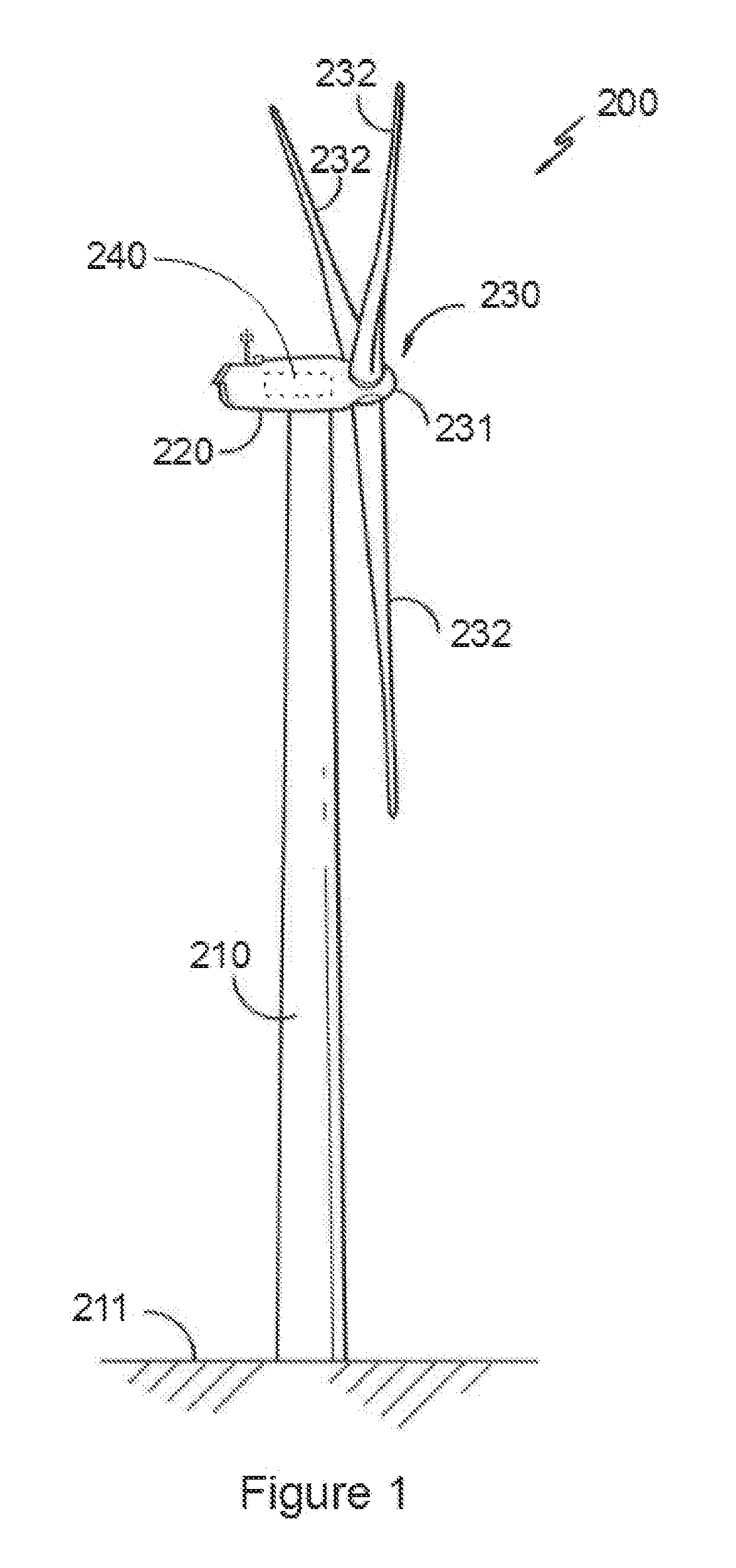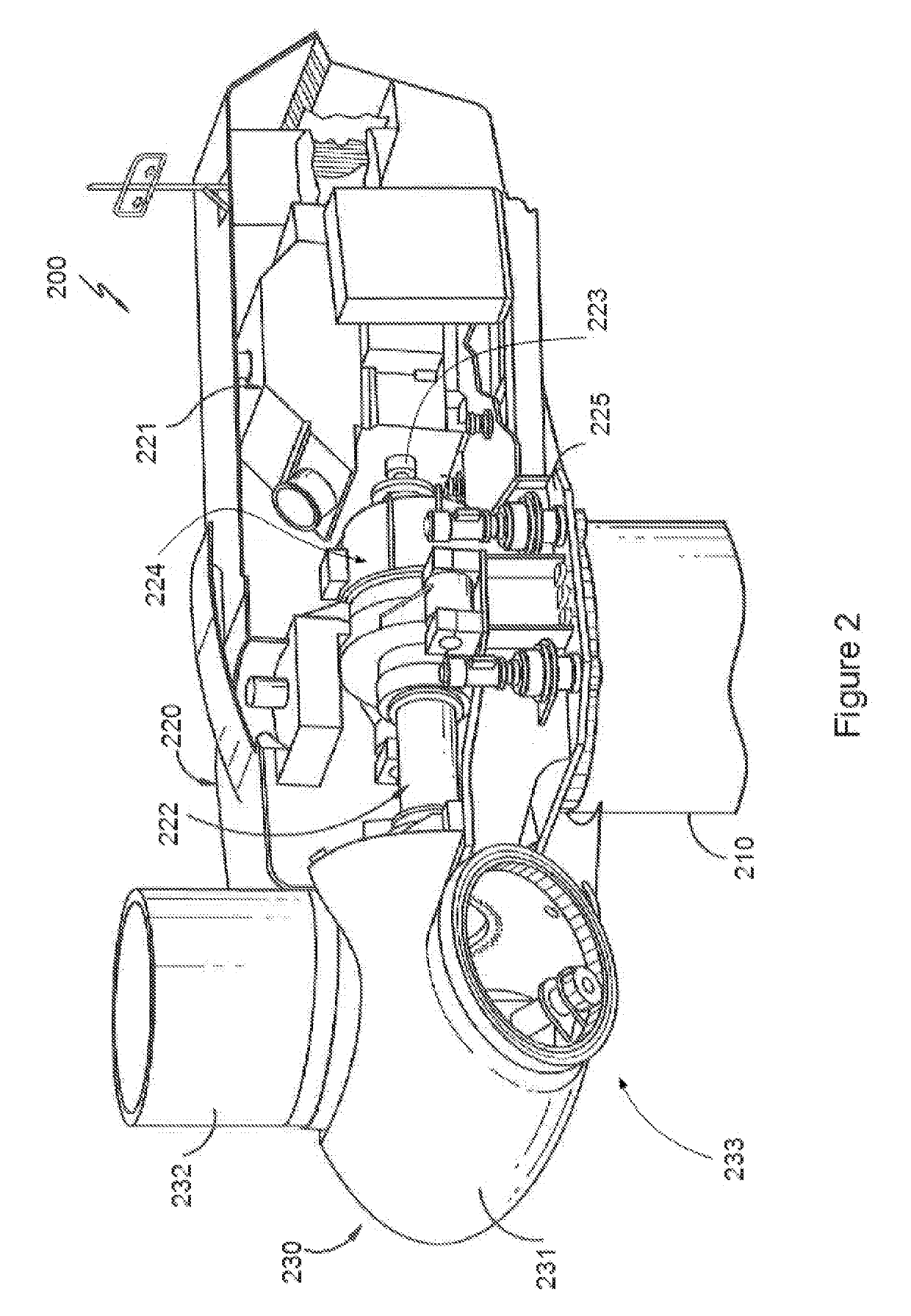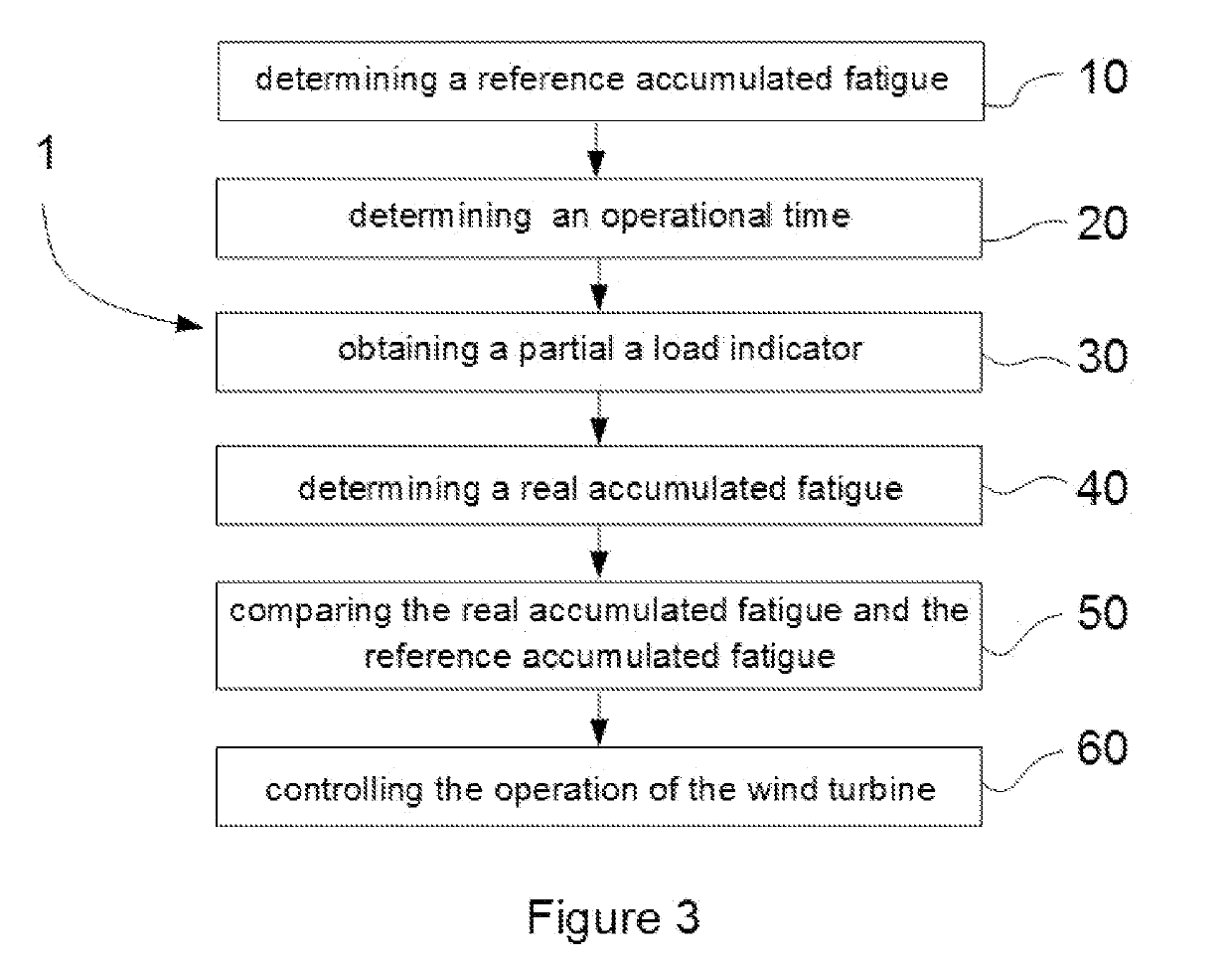Methods of operating a wind turbine
a wind turbine and wind power technology, applied in the direction of wind power generation, machines/engines, mechanical equipment, etc., can solve the problems of wind power not always performing exactly according to expectations, and wind power not reaching the design life, etc., to achieve the effect of reducing the cost of energy, improving the availability of wind power, and optimizing the operation of wind power
- Summary
- Abstract
- Description
- Claims
- Application Information
AI Technical Summary
Benefits of technology
Problems solved by technology
Method used
Image
Examples
Embodiment Construction
[0019]In these figures the same reference signs have been used to designate matching elements.
[0020]Operational time of a component herein shall mean a time that a component has been operating.
[0021]Design lifetime of a component shall mean the expected maximum lifetime of a component.
[0022]Reference accumulated fatigue herein shall more particularly mean an accumulation of theoretical fatigue loads (with or without a safety factor) that a wind turbine (component) is expected to experience.
[0023]Reference accumulated fatigue at design lifetime shall mean the accumulated theoretical fatigue loads (with or without a safety factor) that a wind turbine (component) is expected to withstand during its design lifetime.
[0024]Reference accumulated fatigue trend shall mean a curve or line indicating an accumulation of theoretical expected fatigue loads (with or without a safety factor) from a beginning of operation of a wind turbine (component) until the design lifetime.
[0025]Reference accumu...
PUM
 Login to View More
Login to View More Abstract
Description
Claims
Application Information
 Login to View More
Login to View More - R&D
- Intellectual Property
- Life Sciences
- Materials
- Tech Scout
- Unparalleled Data Quality
- Higher Quality Content
- 60% Fewer Hallucinations
Browse by: Latest US Patents, China's latest patents, Technical Efficacy Thesaurus, Application Domain, Technology Topic, Popular Technical Reports.
© 2025 PatSnap. All rights reserved.Legal|Privacy policy|Modern Slavery Act Transparency Statement|Sitemap|About US| Contact US: help@patsnap.com



